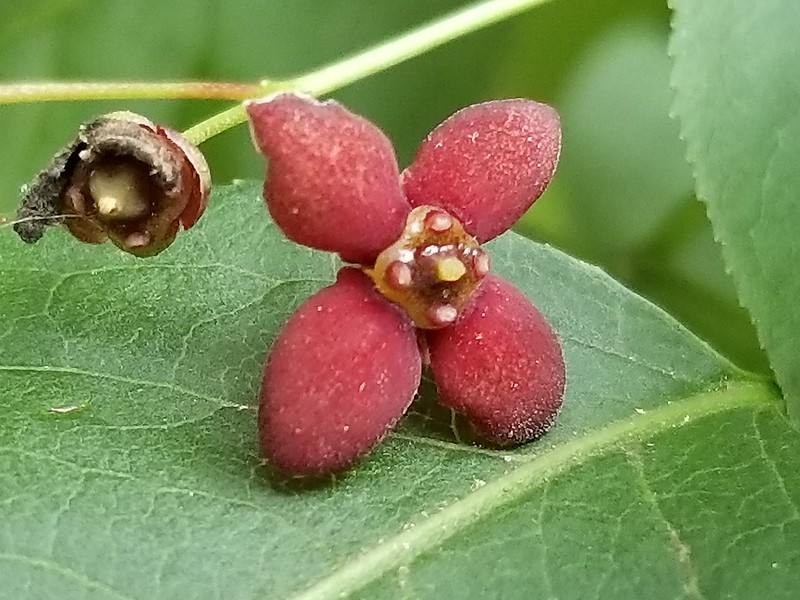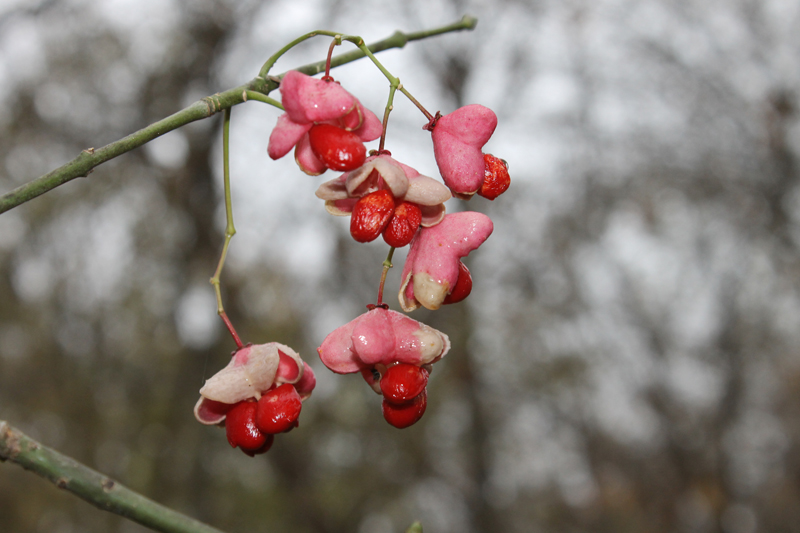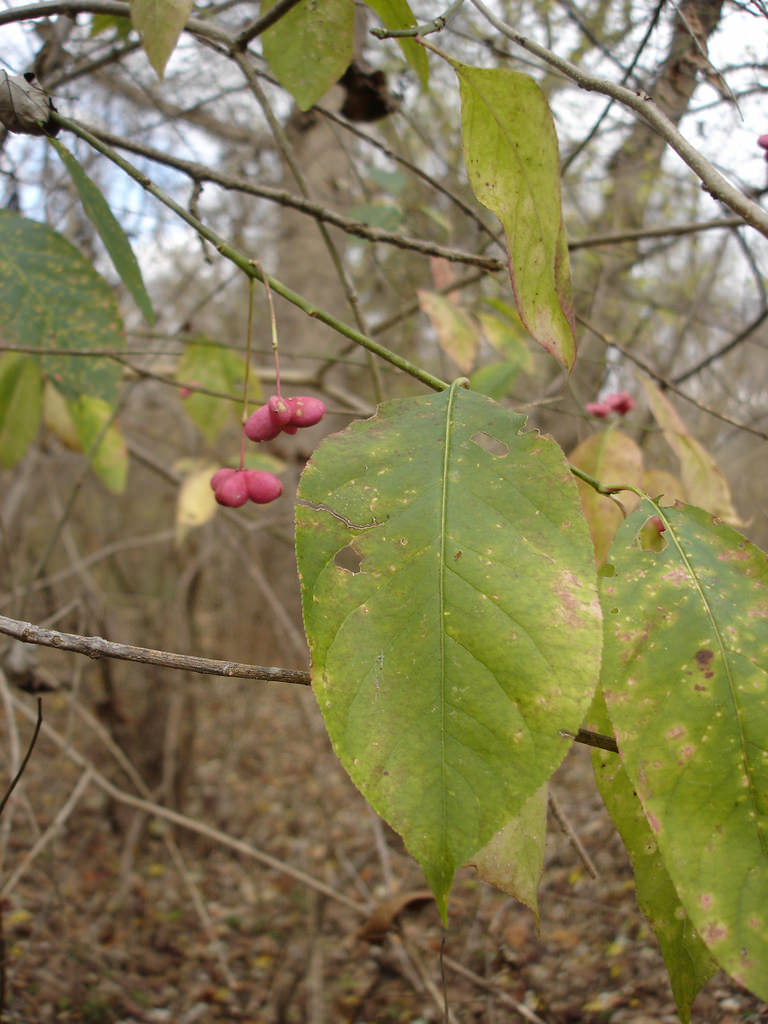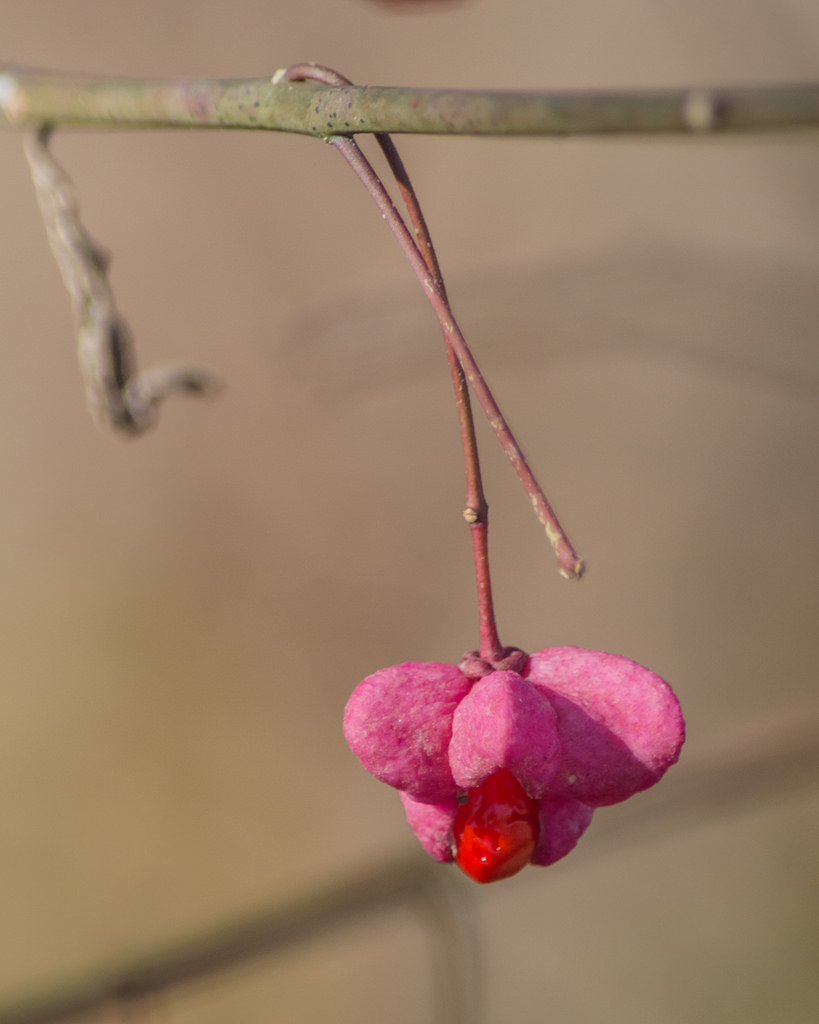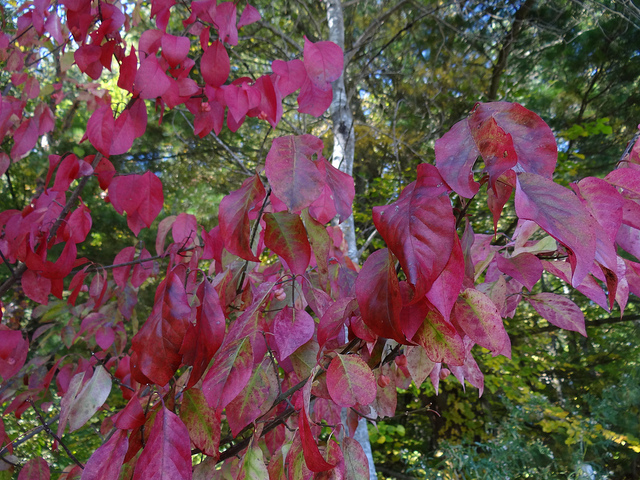Map Snapshot










20 Records
Seasonality Snapshot
Source: Wikipedia
| Euonymus atropurpureus | |
|---|---|

| |
| Scientific classification | |
| Kingdom: | Plantae |
| Clade: | Tracheophytes |
| Clade: | Angiosperms |
| Clade: | Eudicots |
| Clade: | Rosids |
| Order: | Celastrales |
| Family: | Celastraceae |
| Genus: | Euonymus |
| Species: | E. atropurpureus
|
| Binomial name | |
| Euonymus atropurpureus | |
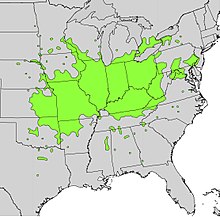
| |
| Generalized natural range of Euonymus atropurpureus | |
Euonymus atropurpureus is a species of shrub in the bittersweet family. It has the common names American wahoo, eastern wahoo, burningbush[2] and hearts bursting with love.[3] It is native to eastern North America.
Distribution and habitat
[edit]This species is primarily found in the Midwestern United States, but its range extends from southern Ontario south to northern Florida and Texas.[4][5][6] It grows in low meadows, open slopes, open woodland, stream banks and prairies, in moist soils, especially thickets, valleys, and forest edges.[6]
Description
[edit]This section includes a list of references, related reading, or external links, but its sources remain unclear because it lacks inline citations. (December 2023) |
It is a deciduous shrub growing to 8 m tall, with stems up to 10 cm diameter. The bark is gray, smooth, and lightly fissured. The twigs are dark purplish-brown, slender, sometimes four-angled or slightly winged. The leaves are opposite, elliptical, 8.5–11.3 cm long and 3.2–5.5 cm broad, abruptly long pointed at the tip, and with a finely serrated margin; they are green above, paler and often with fine hairs beneath, and turn bright red in the fall. The flowers are bisexual, 10–12 mm diameter, with four greenish sepals, four brown-purple petals and four stamens; they are produced in small axillary cymes. The fruit is a smooth reddish to pink four-lobed (sometimes one or more of the lobes abort) capsule, up to 17 mm diameter, each lobe containing a single seed, orange with a fleshy red aril.
Uses
[edit]The fruit is poisonous to humans, but is eaten by several species of birds, which disperse the seeds in their droppings. It is used medicinally in both the United States and southeastern Canada. The powdered bark was used by American Indians and pioneers as a purgative.[7][8]
References
[edit]- ^ Botanic Gardens Conservation International (BGCI).; IUCN SSC Global Tree Specialist Group (2018). "Euonymus atropurpureus". IUCN Red List of Threatened Species. 2018: e.T135956865A135956867. doi:10.2305/IUCN.UK.2018-2.RLTS.T135956865A135956867.en. Retrieved November 20, 2021.
- ^ Weakley, Alan S. "Flora of the Southern and Mid-Atlantic States".
- ^ Nelson, Lewis S.; Shih, Richard D.; Balick, Michael J. (2009). Handbook of poisonous and injurious plants. New York Botanical Garden. p. 159.
- ^ Little Jr., Elbert L. (1977). "Euonymus atropurpureus" (PDF). Digital Representations of Tree Species Range Maps from "Atlas of United States Trees" by Elbert L. Little, Jr. (and other publications). United States Geological Service. Archived from the original (PDF) on October 18, 2011.
- ^ "Euonymus atropurpureus". Germplasm Resources Information Network. Agricultural Research Service, United States Department of Agriculture. Retrieved January 16, 2018.
- ^ a b Ma, Jinshuang; Moore, Gerry. "Euonymus atropurpureus" (PDF). United States Forest Service. Archived (PDF) from the original on June 16, 2015. Retrieved November 26, 2007.
- ^ "Euonymus atropurpureus". Plants for a Future.
- ^ Little, Elbert L. (1980). The Audubon Society Field Guide to North American Trees: Eastern Region. New York: Knopf. p. 567. ISBN 0-394-50760-6.
